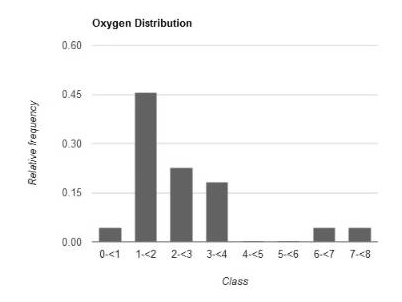Chapter 2: Q.2.91 (page 70)
In the article "Distribution of Oxygen in Surface Sediments from Central Sagami Bay, Japan: In Situ Measurements by Microelectrodes and Planar Optodes" (Deep Sea Research Part I: Oceanographic Research Papers, Vol. 52, Issue 10, pp. 1974-1987), R. Glud et al. explored the distributions of oxygen in surface sediments from central Sagami Bay. The oxygen distribution gives important information on the general biogeochemistry of marine sediments. Measurements were performed at 16 sites. A sample of 22 depths yielded the following data, in millimoles per square meter per day, on diffusive oxygen uptake. Use cutpoint grouping with a first class of 0 -under 1 .

a. determine a frequency distribution.
b. obtain a relative-frequency distribution.
c. construct a frequency histogram based on your result from part (a).
d. construct a relative-frequency histogram based on your result from part (b).
Short Answer
(a)
(b)
(c)
(d)






